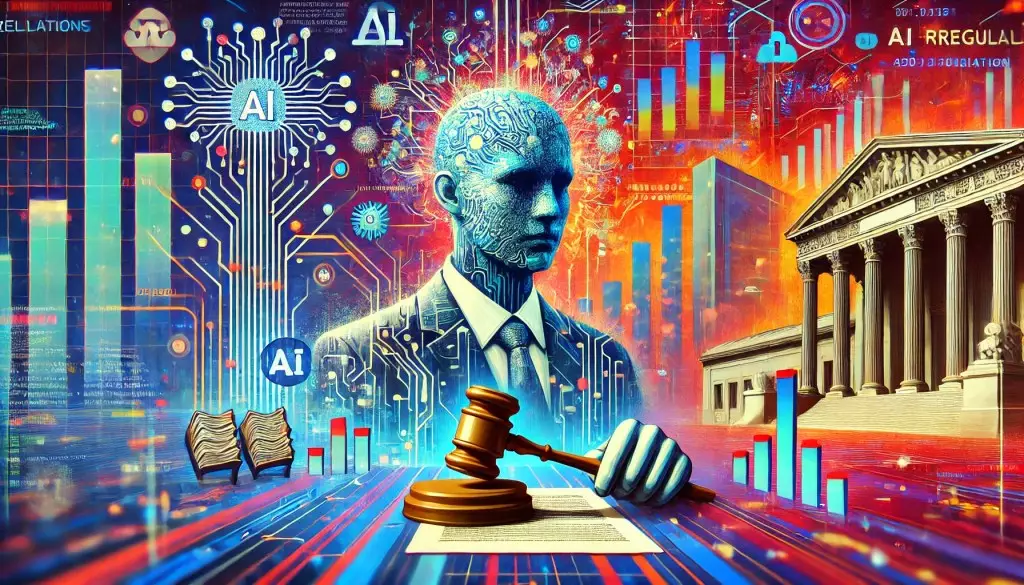As the AI landscape continues to evolve, the balance between innovation and regulation remains a crucial point of contention. The recent moves by the Trump administration to dismantle previous Executive Orders established under President Biden created a seismic shift in how artificial intelligence development is perceived and managed at the governmental level. This complicated dance of regulatory oversight introduces both opportunities and challenges for technology firms striving to innovate while ensuring safety and ethical standards. At a recent Senate Committee hearing, influential leaders from major tech companies, such as OpenAI and Microsoft, placed their stakes on the table, urging governments to facilitate rather than hinder the development of AI infrastructures.
The executives emphasized a critical need for efficient permitting processes to expedite the establishment of data centers, power plants, and chip fabrication facilities. The overarching message was clear: to maintain the United States’ competitive edge over global rivals like China, robust and responsive infrastructure is paramount. This calls for not just investment but a strategic overhaul of existing policies that create unnecessary bottlenecks.
The Imperative for Skilled Talent
Moreover, the discussion ventured into the realms of workforce development, spotlighting the essential need for skilled labor across various sectors. Sam Altman, the CEO of OpenAI, highlighted the urgency of fostering talent not just in tech roles but also in auxiliary sectors like construction and energy. With an increased focus on generative AI technologies, the requirement for a diverse talent pool becomes even more pronounced. Policymakers must rethink immigration and education policies that support this critical workforce transition, ensuring that innovation does not come at the expense of human resources.
The prevailing narrative further suggested that promoting “AI diffusion”—the widespread adoption of AI across multiple sectors—could serve as a vital growth lever for the economy. This vision aligns with broader ambitions to enhance productivity and ignite economic advancements that reverberate through every layer of the workforce.
The Reactiveness of Policy Towards Industry
Interestingly, the hearing underscored a broader ideological divergence in how the government perceives its role in the tech landscape. The Republican majority displayed a preference for a laissez-faire approach, pushing for minimal intervention in the burgeoning AI sector. While the prospect of reduced regulatory oversight may sound enticing to industry leaders, such sentiments could backfire. An unstructured environment may lead to a race to the bottom, where companies prioritize speed over safety or ethical considerations.
Microsoft’s Brad Smith articulated a cooperative philosophy that contemplates the interdependencies within the AI ecosystem. He stated that “we’re all in this together,” which underlined the necessity for collaboration across various sectors—spanning from infrastructure development to software applications. This collaborative ethos suggests that a holistic approach to governance, one that considers input from all stakeholders, may yield better long-term results than a detached, hands-off strategy.
Infrastructure: The Backbone of AI Growth
One pivotal aspect raised during the hearing was the need to bolster the AI technology stack, a multi-layered framework that underscores how each component—from hardware to software—interrelates to foster innovation. As the demand for intense computational resources escalates, the spotlight on semiconductor production intensifies, making the Chips and Science Act an essential piece of legislation. However, the sluggish pace of allocating resources and navigating production challenges illustrates the gap between ambition and execution.
The executives stressed that the U.S. must ramp up its capability to manufacture advanced chips domestically. Though the Chips and Science Act represents a starting point, more concerted efforts are necessary to optimize production efficiency. Failure to meet these demands could risk not only U.S. leadership in AI but also its broader technological stature on the global stage.
The Global Dimension of AI Development
While domestic focus is crucial, dismissing the international dimension of AI development would be shortsighted. The executives at the hearing argued vehemently for policies that welcome global talent and foster collaboration beyond American borders. Smith pointed out that America’s global leadership hinges on its ability to export its innovations and maintain competitive edges through strategic partnerships. Herein lies a crucial insight: isolationist tendencies would only serve to fragment the ecosystem, risking the collaborative synergy necessary for continued progress.
Interestingly, the discussion in the Senate coincided with announcements from the Commerce Department signaling changes to the regulations governing chip exports, hinting at a move toward a more collaborative international framework. The challenge remains for U.S. policymakers to strike a balance between safeguarding national interests and embracing global partnerships.
The tug-of-war over AI regulations reflects broader societal issues, echoing struggles seen in previous technological revolutions. As executives navigate the terrain littered with both opportunities and constraints, the path forward will depend on an inclusive approach that acknowledges the multifaceted nature of innovation—one that is not merely about technology, but about people, policy, and the potential for societal transformation.

